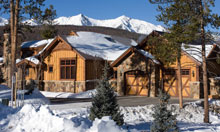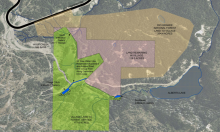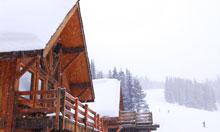Frequently Asked Questions
What will the proposed development look like once built?
The project aesthetic will complement the unique experience at Wolf Creek.
The development includes:
- A modest, 70-room hotel
- Cabins overlooking a pond in the woods
- Areas for yurts and “glamping” (a more comfortable style of camping that includes access to utilities and prepared meals)
- Condos nestled among the trees
- Chalets
How will the development affect local communities?
The effects are overwhelmingly positive.
- Jobs: The project will bring new, much-needed exposure to the area as a tourist destination. This will bring new jobs to the area ─ 2,100 jobs annually after construction is complete ─ and allow current businesses that are struggling to do much better economically. It will also increase tourism to the surrounding communities of Pagosa Springs, Creede, and South Fork, areas that many out-of-staters do not know about.
- Recreation: The project will enhance the experience at Wolf Creek, with new seasonal activities available to locals, such as camping in yurts and summer festivals on site.
- Grants for the environment: Despite what the out-of-town environmentalist opponents claim, the project will provide much-needed funds to help the local wildlife. We have committed over $1 million to be used by scientists to study fluctuations in the population of Canada lynx and improve the habitat for wildlife.
- Boost to tax base: The project will generate tax revenues in Mineral County and the surrounding communities.
For local families and business owners who depend on tourism to put food on the table, these are significant benefits.
What is keeping this development from being built?
The development site lacks road access. The project team has pursued two options for gaining access:
- A land exchange: The developers offered to trade private land in exchange for public land abutting Highway 160.
- A road easement: Forest Service would grant an easement to build a road from the highway to the private parcel over public land.
Are the developers legally entitled to road access?
Yes. Property owners with land surrounded by national forests (inholdings) are entitled to access their land for reasonable uses, under U.S. law.
If the developers are entitled to the road, why haven’t they gotten it yet?
There are two ways to obtain access to an inholding: Congressional legislation or Forest Service approval via an environmental impact analysis. For political reasons, the project team has been unable to secure legislation in Congress. The project team has pursued Forest Service approval since 2001, investing significant time and resources into a transparent, public process. Out-of-town environmental pressure groups have twice blocked, through the courts, the property owner’s road access, which the Forest Service approved in 2006 and again in 2015.
Who are these environmental groups?
The environmental groups are led by the Denver-based Rocky Mountain Wild. They are joined by the San Luis Valley Ecosystem Council, based in Alamosa; the San Juan Citizens Alliance, based in Durango; and Wilderness Workshop, based in Carbondale.
What do they want?
The environmental groups want the private landowner’s property to become public land. They do not want enhanced recreational opportunities or associated economic stimulus for local communities.
What is the project team’s intent and vision?
The development team also values the area’s biodiversity and wants more people to enjoy the outdoor recreational opportunities and experiences that southwestern Colorado has to offer. The project plan balances sensitivity to the environment with the economic benefits to thousands of area residents. The developers have committed more than $1 million to benefit wildlife through tracking studies, public education, and wildlife awareness on Highway 160. The landowner has proposed exchanging rare and valuable wetlands currently located on the private parcel for public land that is less environmentally sensitive: a proactive approach towards ensuring a win for the environment.
Why can’t the project’s developers use their political influence to get the project done?
The out-of-town environmental groups that oppose this development have claimed for years that the developers have unduly influenced elected officials and the Forest Service leadership. That goes against all logic. Clearly, the project’s developers do not have the influence that the environmentalists claim because they have not yet obtained their access. Furthermore, what the environmentalists do not want the public to know is that they have just as much, if not more, D.C. influence through their own behind-the-scenes billionaires who are supporting their efforts.
What current efforts are the project team working on to obtain the legally mandated road access?
The project team is appealing a court decision that overturned Forest Service approval of the land exchange. The team has also asked the Forest Service to grant a road easement as required by law.
What is the Ski Area’s position on the project?
The Ski Area is in full support of road access to make way for the development. The Ski Area prefers the land exchange option. The land exchange would move the project off of the skiable terrain in the waterfall area and back into the trees. This would put the development farther away from the ski area and closer to the highway. The project team has partnered with the Ski Area to make the development more compatible with the uniqueness of Wolf Creek.
What was the size of the original development contemplated in the 1986-1987 land exchange?
The original land plan developed and presented to Mineral County and the Rio Grande National Forest in December 1986 included 2,151 units. In 1987, LMJV jointly applied in water court with Wolf Creek Ski Corporation for and subsequently received water rights for 2,444 EQR’s (units). The 1986-1987 land exchange and scenic easement did not tie the approval of the land exchange to a specific density of units but did clearly identify that Mineral County rules and regulations would be used to determine the unit density of the ski area resort development. In 2004, Mineral County approved a revised planned unit development (PUD) plan for 2,172 units, which protected wetlands by removing a lake that was covering the wetlands in the original 2,151-unit plan.
In 2010, LMJV voluntarily reduced the proposed density to 1,711 units for the land exchange development plan and to 1,850 units for the ANILCA easement development plan.
The 1986-1987 land exchange was not at all controversial and had nearly unanimous local and public support. Furthermore, the Rio Grande National Forest received more than 900 comments during the 2015 land exchange/easement access process and the majority of all comments were in favor of the Village at Wolf Creek development and the land exchange and/or easement access.
Has the project team tried to find a compromise with the environmental opponents of the development?
Yes. The project team has sought meaningful dialogue with the environmental pressure groups to understand whether there might be a way to resolve their differences. Unfortunately, their opponents seem to want no resolution of this decades-long battle. Maybe it’s just too good of a fundraising tool. The environmental extremists want the fight to go on as long as possible, even if it hurts the local communities.


Frequently Asked Questions
Learn more about The Village at Wolf Creek.

The Opposition
This is NOT your local grass-roots coalition fighting against the project.

News and Press
Read new articles and press realeases about the Village.

